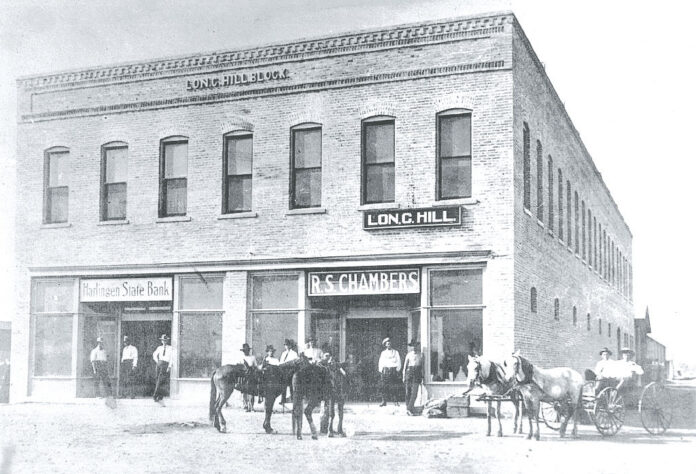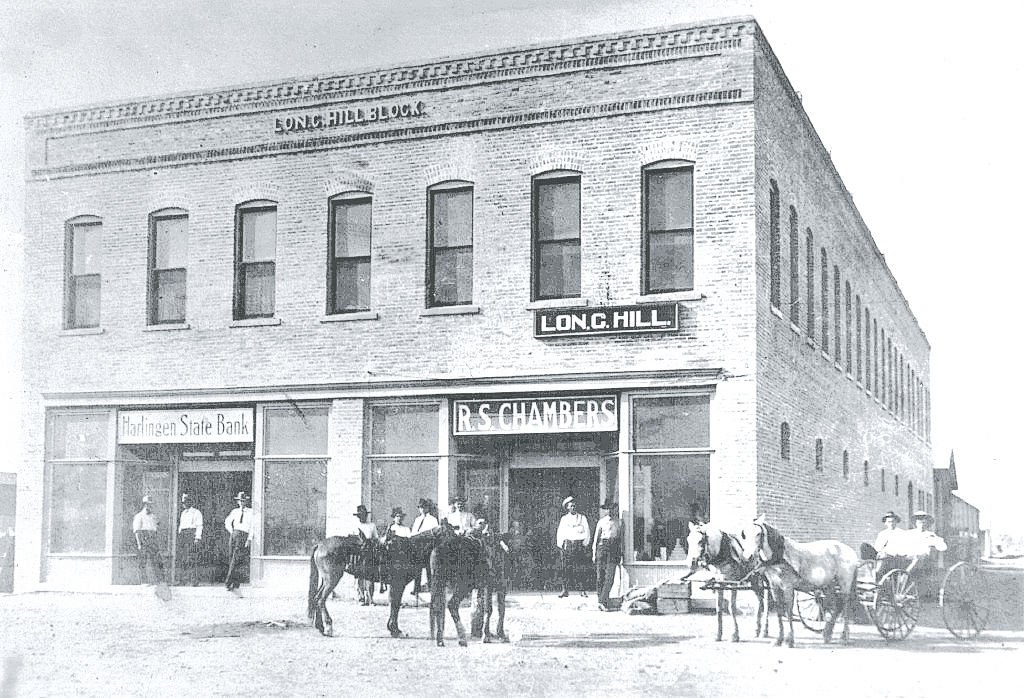BY NORMAN ROZEFF
By the year 2001, the history-related entities of the Lower Rio Grande Valley had evolved to the point that many communities had either a history museum or a historical society or both.
Harlingen was lacking a historical society. This situation was apparent to the Harlingen members of the Cameron County Historical Commission. As a result these members and other interested parties held a meeting on 12/19/2000 to discuss the situation.
Participants at this meeting were Henry Griffin, Rosaura Gutierrez, Mary Lou Rumbo, H. J. and Elizabeth Garrett, Jean Phipps McKelvey-Clore, Lupita Gutierrez-Garza, Michel Garza, and librarians Ruben Rendon and Joseph Muniz.
At this meeting they formulated the underlying basis for the establishment of a Harlingen Historical Preservation Society (HHPS).
The next major step was the first public meeting devoted to organizational orientation of the society. This took place at the auditorium of the Harlingen Public Library on May 4, 2001.
New partners were welcomed along with city and county participants. The agenda also published the society’s purpose as stated in its by-laws.
This statement of purpose read: “The purpose of this society shall be to study, collect, disseminate, and preserve for the City of Harlingen, Texas, all historical records and antiquities relating to the history, its founding, settlement and development, of Harlingen and its people; to preserve items of current events that may have historical interest in the future; to interest and unite the townspeople in a finer public spirit, through a fuller understanding of the cultural traditions and history, both past and in the making, of Harlingen and the Rio Grande Valley.”
There were 37 people in attendance of whom 36 became members of the society. Twenty-three more were to join in September. (Membership would fluctuate annually from a high of 72 in 2002 to a low of 28 in 2008.)
The proposed Board of Directors for the society were Mary Lou Rumbo, president; Lupita Gutierrez-Garza, vice-president and chairman of the ways and means committee; Carolyn Hall, secretary; and Jack Garrett, treasurer. In addition there would be seven more members on the board. It was August 1, 2001 that the society was officially incorporated with the Secretary of State of Texas and in January 2002 received its tax exempt status from the IRS.
Results would be quickly forthcoming. By October 2001 the society had started an oral history collection and set three basic goals, namely identification, protection, and interpretation of historic sites, structures, places, and objects. In facilitating these, the society would assist professional staff of the library and the then named Rio Grande Valley Museum (now the Harlingen Arts and Heritage Museum), organize and carry out training sessions for HHPS members and the general public.
The Harlingen Public Library under its director, Ruben Rendon, became the meeting place of the organization and more importantly the receptacle for the wealth of paper items in its newly established Archive Room. Here inquiring individuals could readily access regional records, books, magazines, newspapers, records, real estate abstracts, manuscripts, yearbooks, old telephone directories, reverse directories and the like.
Over time the room’s contents expanded to include Aaron Godfrey’s American railroad collection with its especially large folder on Valley railroads. A large map cabinet grew to contain not only Harlingen maps but also those of Cameron County, the Valley as a whole, and Texas.
One unique contribution was a large number of architecture and engineering drawings of Valley structures. The cooperation of the Harlingen Public Library was paramount in these endeavors.
The society officers realizing the need for all members to receive more knowledge and training, encouraged all to attend valley, regional, and state historical/preservation meetings and workshops. The Texas State Technical College helped the organization by demonstrating how to scan and digitize old photographs of interest.
In 2001 as the organization came together memberships were offered at a $10 a year cost (they would later be raised to $12). By October this year the organization had 62 paid memberships. The Archive Room filing was organized in a systematic manner.
Three of the four-drawer filing cabinets were assigned to about 68 Harlingen subjects while three additional file cabinets contained information on other Lower Rio Grande Valley subjects, mainly with a site for each city and town broken down into folders of administration, churches, history, obituaries, and schools.
In addition two legal size filing cabinets were devoted to over sized paper items and also Harlingen photographs, birds, wildlife, the histories of the Rio Grande Valley Historical Society and the Harlingen one, and a drawer with individual folders for each Harlingen church. In addition there was a two drawer cabinet devoted solely to railroad literature.
While still a teenager these were mostly compiled by Aaron Godfrey of Primera from numerous sources. One of its folders is devoted solely to the railroads of the Valley. Another individual who greatly added to the knowledge of area’s early history was Dorothy Taylor, nee Madeley. She was related to the founder of Combes, James Dishman. Her donations of documents was a significant addition to the files.
President Mary Lou Rumbo suggested that the society’s history researcher, Norman Rozeff, work on a chronology of Harlingen history. He commenced that work in 2001 and completed what would turn out to be an over 340 page work with over 3,400 surnames indexed. Commencing with the area’s pre-history, it progressed to the Harlingen area’s early history then launched into the history of the organized town.
This was broken into decades and year ranging from 1900 through 2009. The subjects covered fell into these categories: Development; Agricultural/Ranching; Government/Politics—City, County, State, National; Business/Commercial/Industry; People; Religious; Education; Organizations – Social, Civic, Service; and Miscellaneous. (This chronology may be accessed under the My Harlingen website and the Harlingen Arts and Heritage Museum listing under Harlingen history.)
The society continued to evolve by establishing various interest groups/committees. These included buildings, documents, events, research, images, individuals and families, and oral history. Concerning the latter, in December 2003 Betty Murray was to donate 32 oral history tapes to the society.
They had been recorded in 1985 at the 75th anniversary of Harlingen’s founding. To widen participation twelve ex-officio members including city officials, the two Chamber of Commerces, the museum, and other interested parties were added to the society’s leadership. Members of the society were on the ground floor when it came to organizing the Tropical Trail initiative formulated by the state to promote tour ism.
One of the initial projects was the setting up of a master plan for the restoration and preservation of the Harlingen Cemetery which had been established in 1909 with Harlingen founder Lon C. Hill’s donation of a 7.6 acre parcel of land on what would eventually become F Street.
Mildred Bennett was the member responsible for bringing the sad status of the Harlingen Cemetery to the society’s attention. This was a long-term project, but eventually it led to the staking out of much of the cemetery and compiling a detailed record of individuals buried there from sexton and other records, the rest being done later by the Rio Grande Valley Hispanic Genealogical Society.
The city also took a larger role in maintaining the grounds and erected a new fence for it. The society organized and sponsored the first Day of the Dead Celebration ever to occur in the city. This event was held in the cemetery and has since grown at the museum with each succeeding year.






